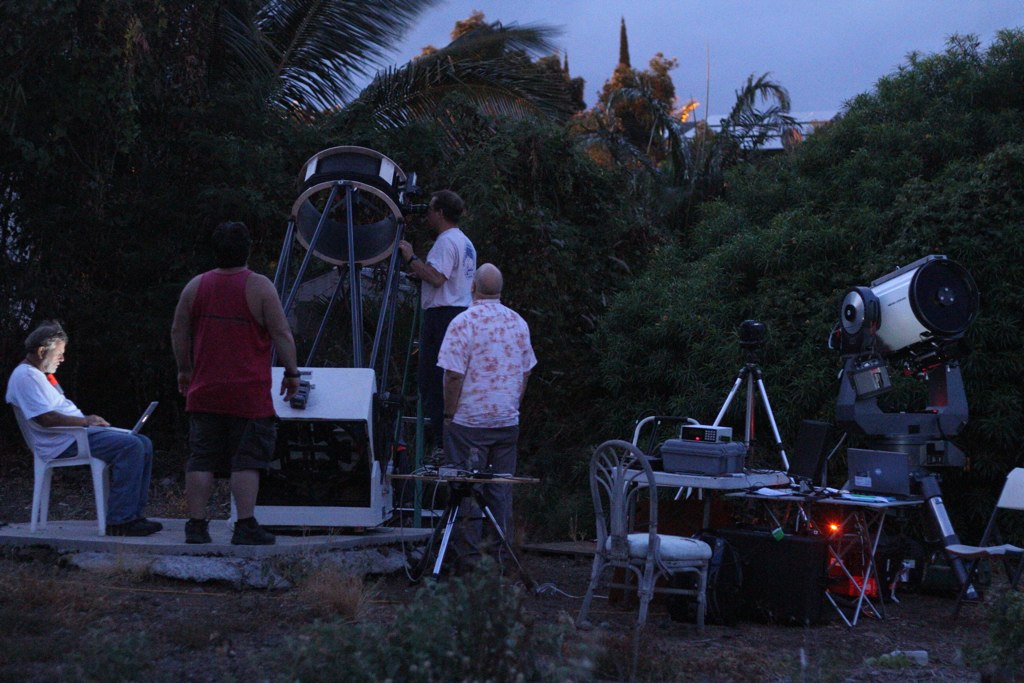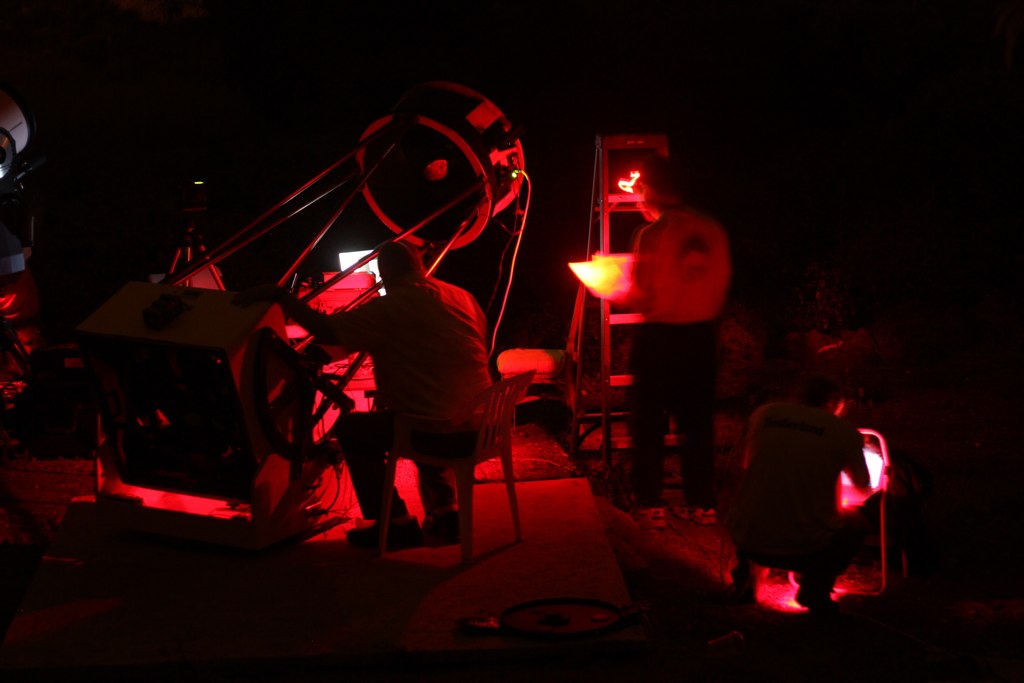How Amateur Astronomers Helped the New Horizons Team Unlock the Secrets of Pluto - From Their Backyards and Driveways
By Maureen Salmi

Being an amateur astronomer on the Big Island of Hawaii has a lot of advantages. In addition to clear, dark skies, and incredible seeing, we are surrounded by the world's premier observatories, and the people who use them. In May, 2011, New Horizons team-member Leslie Young of the Southwest Research Institute (SWRI) in Boulder, Colorado, was one of those people.
Our astronomy club meetings are held at the W. M. Keck Observatory headquarters, and Leslie stopped in to tell us about the progress of the New Horizons Mission, and to let us know how we could help with an upcoming occultation event involving Pluto, and its moons Charon and Hydra.

In June, 2011, a bright star was going to be occulted by Pluto and its moon, Charon. The same star would blink out twice as Charon, and then Pluto, passed between the Earth and the star. Several days later a second occultation event would take place involving the occultation of two stars, one by Pluto and one by its moon, Hydra. Information gathered from recording these events with accurate time-markings would help to better understand Pluto and its moons, before the passage of New Horizons near Pluto in July, 2015. They hoped to gather data about the accurate size, temperature and atmosphere of Pluto and information about its satellites. They might even get new information about the orbits of the moons. [Readers may be interested in reading Emily Lakdawalla's blog, science writer and Senior Editor at The Planetary Society, for further information on what occultations can tell us about an object].
Local amateur astronomers spent long, rewarding nights from June 23 to June 29 involved in this study. Some of those nights were spent practicing and rehearsing for the actual events. Chris Erickson, whose LX200GPS-16 was used for all of the events, suggested that all involved need to be familiar with "the use of the special cameras, computers, filters, adapters, cables, GPS timers, coolers and software.” Those who weren't operating telescopes came to provide support as needed, and to learn techniques for future occultation events.

Telescopes with apertures of at least 11 inches were used, including Cliff Livermore's 24" Starmaster with a Zambuto mirror - one of the largest amateur telescopes on the island; New Horizon team members supplied the cameras (”Dorothea” and "Henri"). Eliot Young from SWRI and Larry Wasserman from Lowell Observatory in Flagstaff, Arizona, worked with the amateurs in backyards and driveways.
Everyone was provided with the necessary information and finder-charts. Finding Pluto in the star-rich field of Sagittarius was the first challenge. Clouds came and went throughout the night, and equipment proved frustrating at times. At one point a timer stopped working and Chris, an electrical engineer, ran into his garage and soldered some wires and returned with a perfectly functioning timer.

There was one final event - a celebratory luau! We were so honored to have played even the smallest part in making this mission a success, and can't wait to see those images of Pluto and its satellites in May. I'm sure there will be another Big Island get-together for the nearest approach in July, 2015.







